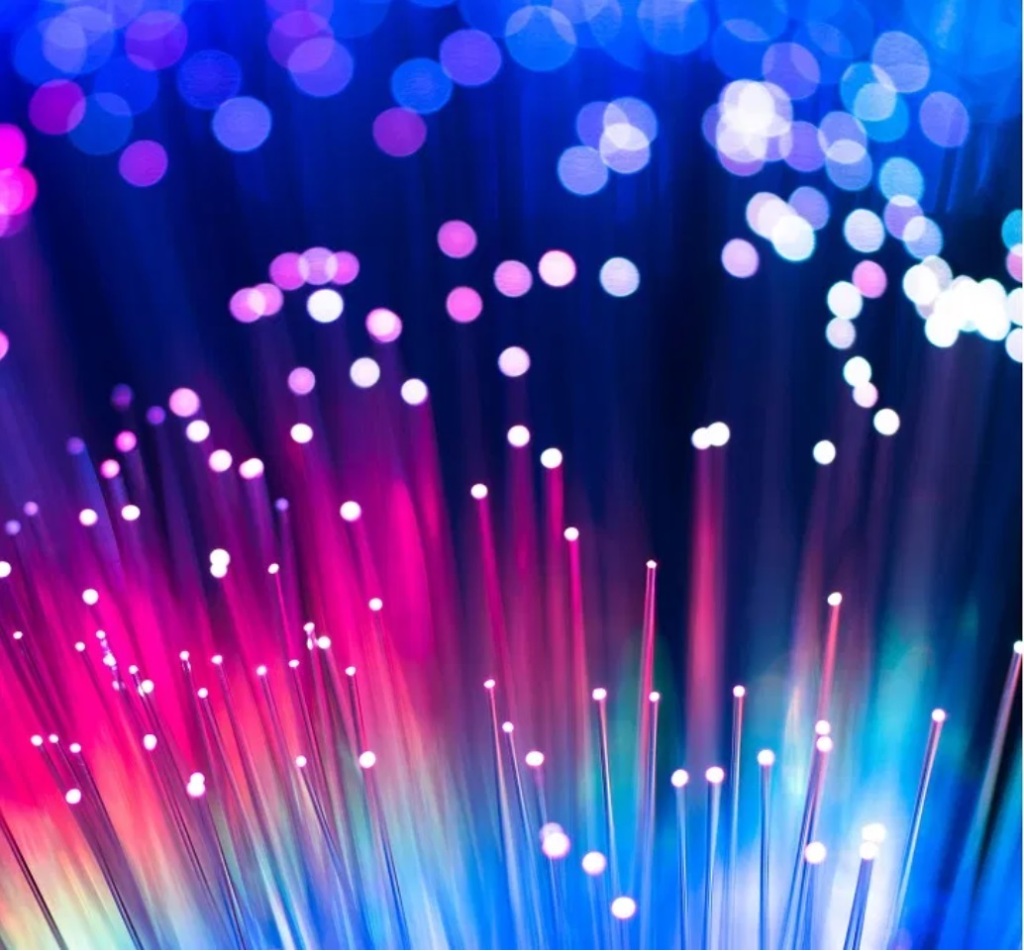
If you’ve been in the IT industry for any amount of time you are likely to have ran across fiber optic patch cables in use in various different installations. Typically, you will most often see fiber optic cables used for an uplink to an internet service provider, in between network devices between buildings in a campus network, or in a datacenter where large amounts of bandwidth and high speeds are required.
Today we will cover a few details about the most common types of cables you may run across, and provide some basic info about fiber optic cables in general.
What’s with all the bright colors?
Fiber optic cables can come in many different colors, but knowing the color designation will help you narrow down its type with just a glance.
Orange – These cables are either OM1/OM2 multimode fiber, with a 62.5 micron core size. These cables are relatively old and have some bandwidth limitations with modern networks.
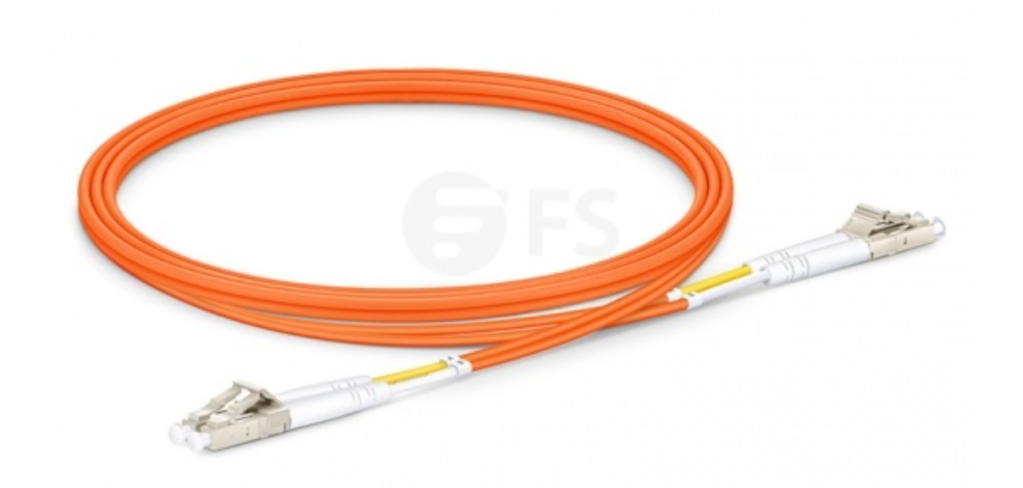
Aqua/Blue – These cables are typically OM3/OM4 multimode fiber, with a 50 micron core size. These are the preferred fiber cable types for short distances and perform well in high bandwidth applications.
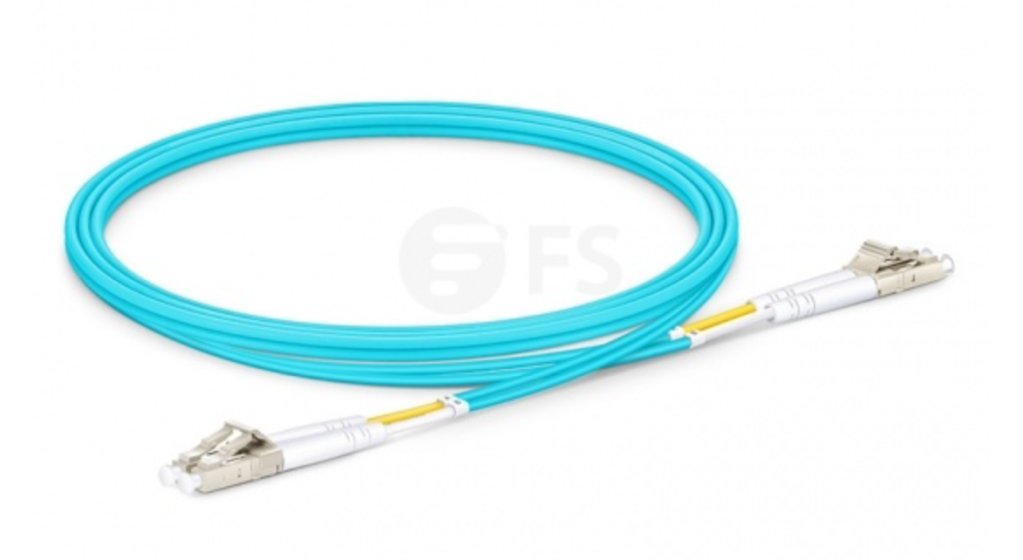
Yellow – These cables are OS2 single mode fiber, with a 9 micron core size and are used for long distance connections. These cables are required for long distances once you reach the limitations of multimode fiber.
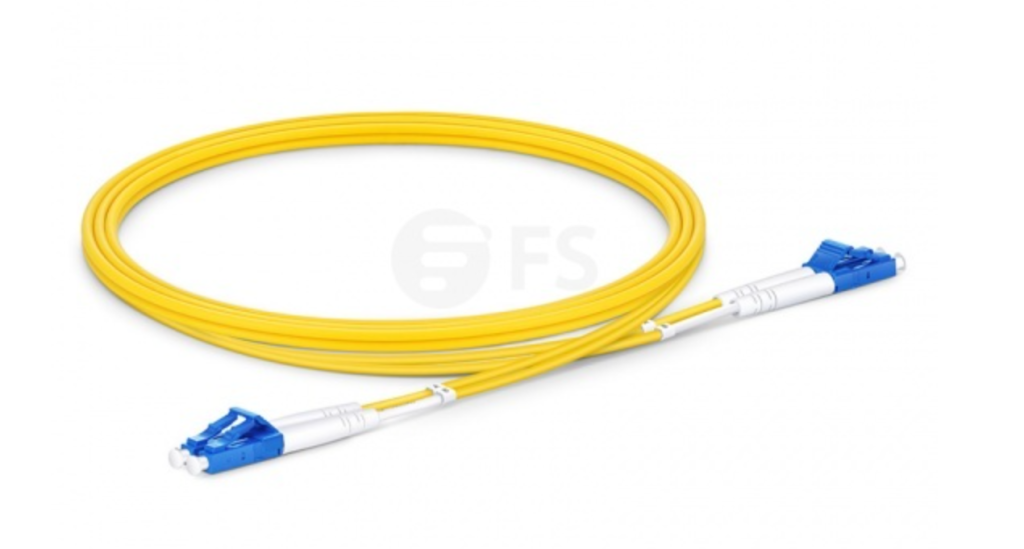
What’s the difference and when do I need to use multimode vs single mode?
Multimode fiber is generally cheaper than single mode fiber overall. The patch cables are around the same prices, but the fiber optic modules (SFPs) that are needed to connect single mode fiber to equipment are significantly more expensive.
This chart below lists various info regarding fiber type and transmission distance capabilities of each.

Single mode fiber is generally required for long runs between buildings in a campus network, or could be what is used by your internet service provider beyond the ONT or network handoff where you plug into your service.
Multimode vs Single mode Comparison
Below is a chart detailing some of the things you’d consider when choosing between the two different fiber types.

Core size vs cladding (outer cable) size comparison
Below are what the numerical designations mean for each fiber type, the unit of measurement here is micrometer or micron which is 1/1,000,000th of a meter,
The diameter of the glass core that the light is transmitted through in a fiber optic cable is just slightly thicker than a human hair.
62.5 micron = OM1/OM2 multimode fiber core
50 micron = OM3/OM4 multimode fiber core
9 micron = OS2 singlemode fiber core
125 micron = outer sheath diameter of each cable
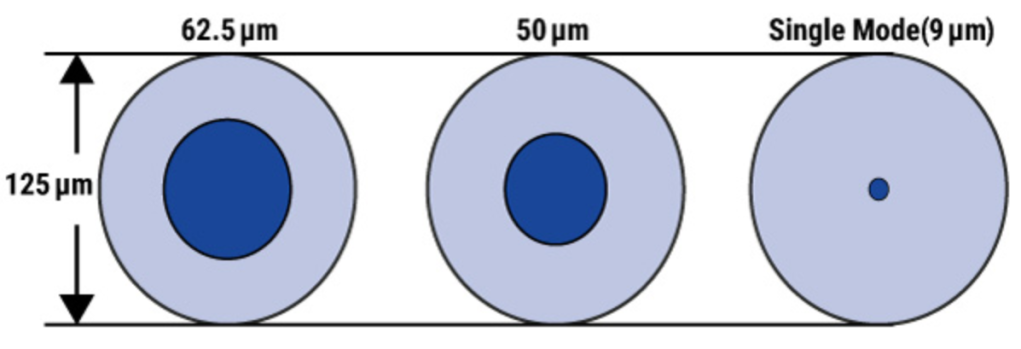
As you see here, higher grade fiber and longer distance capabilities means a smaller core size for the actual light path inside the fiber cable.
Typical fiber connector types
While there are more than these two types, these are the most common you will see in an average business.
LC connector


SC Connector
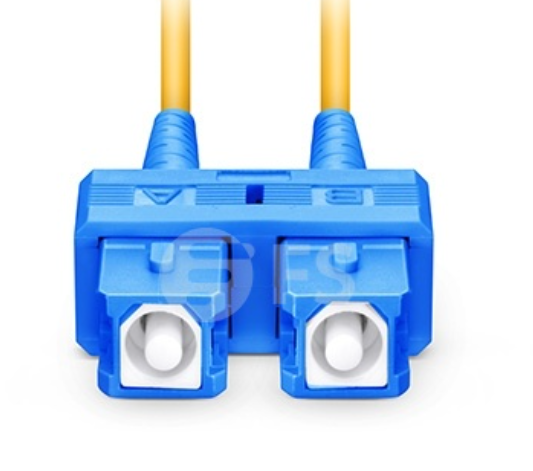
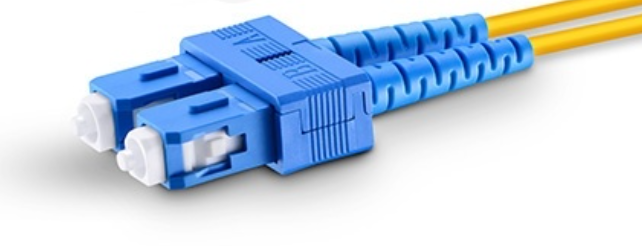
You will see various combinations of these connector types. You can have LC to LC cables, as well as LC to SC like the example below.
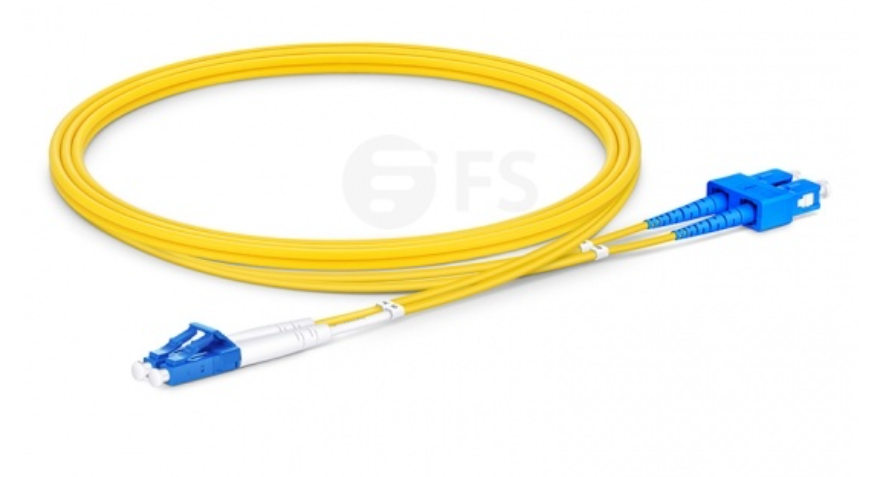
Simplex vs Duplex patch cables
This is yet another type of cable you may see. Most fiber cables are duplex cables, but there is another type called simplex. This simply refers to the number of strands in the cable. Fiber optic cables have one fiber strand to transmit and another fiber strand to receive. Duplex cables consist of two strands of fiber made together in one cable with double ended connectors. Simplex fiber cables are individual cables with only one physical strand of fiber in between.
Below is an example of a simplex cable, look closely and compare to the other duplex cables posted earlier in this post.
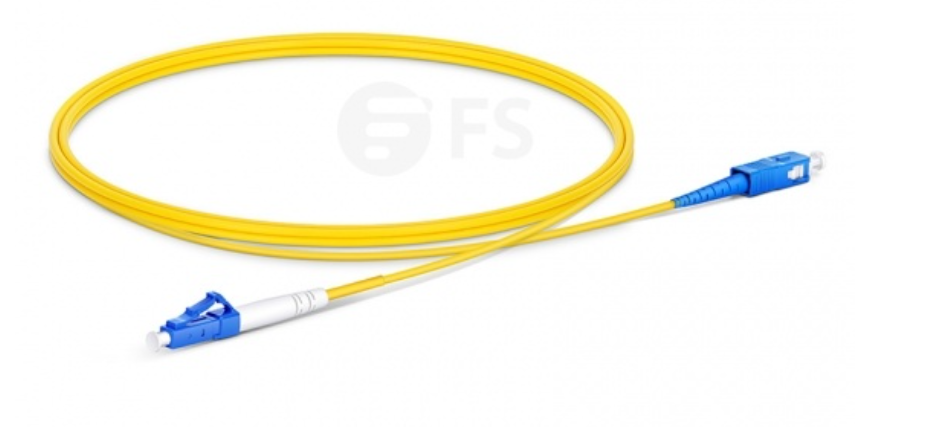
Fiber connector cut angles
You will notice when purchasing fiber optic patch cables, there are letter designations in the description of the item. These refer to the type of cut on the ferrule of the fiber connector. In general, UPC connectors are the standard for most applications. We won’t go into detail on the other variants here, just know that there are different ferrule cut angles for different applications that serve different purposes.
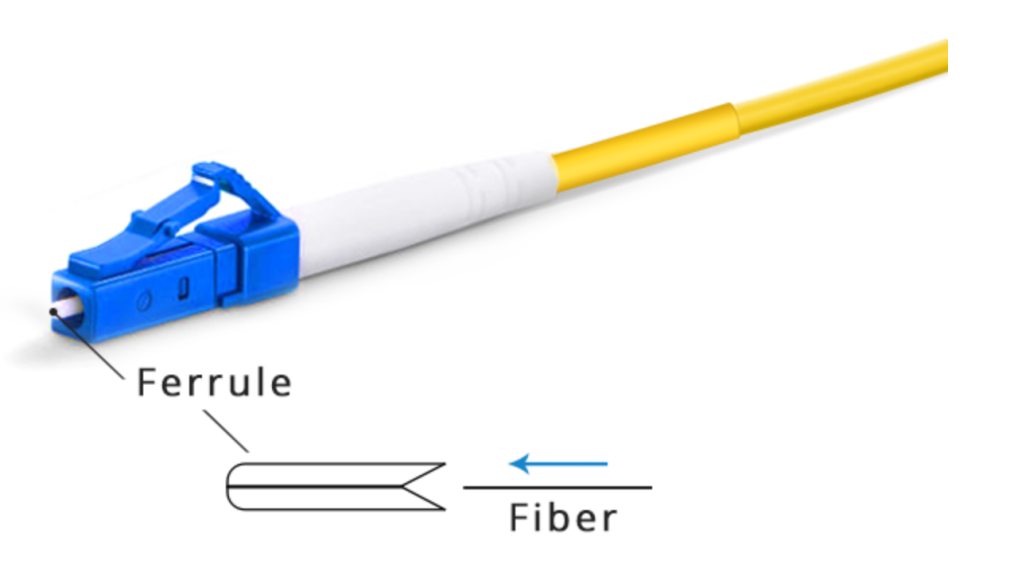
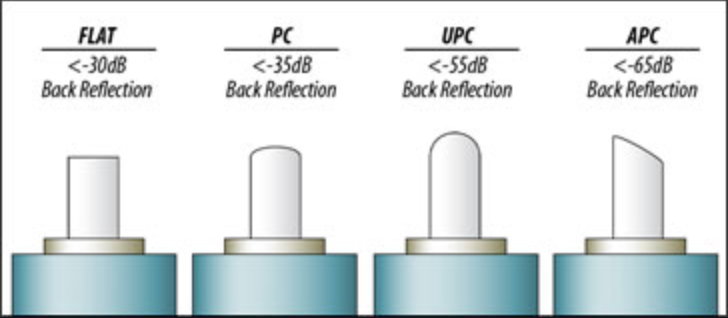
The different ferrule cut angles are distinguishable by the color of the connector itself.
For example, UPC connectors are blue as you’ll see in all of the sample cable images above. APC connectors are green, as in the example below.
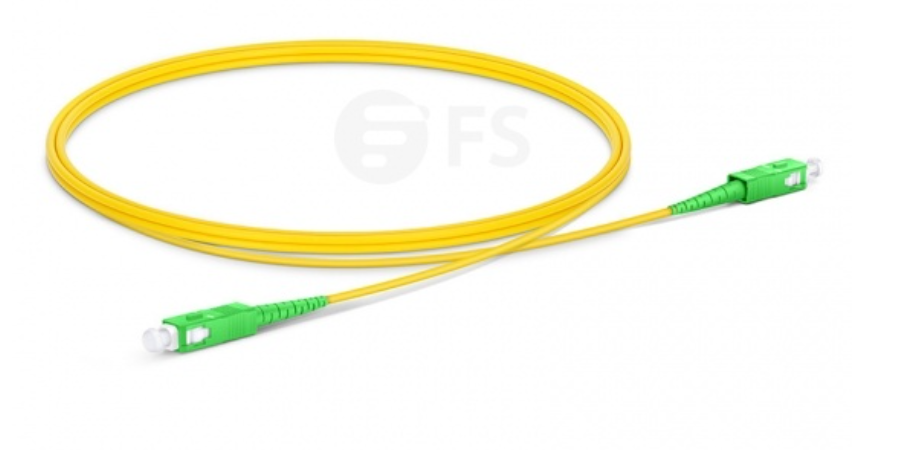
Summary
As you can see, there are many different attributes to even the most common and basic fiber optic cable types. You can easily see why there are many articles, and even entire books written on the subject because there are so many different variations available for different purposes. This article just scratches the surface, and hopefully will provide you with a jumping off point to dive deeper into the many applications and use cases.
In Part 2, we will cover various other fiber optic related info such as standards and examples of various SFP transceivers, testing methods, and SFP diagnostic capabilities.
